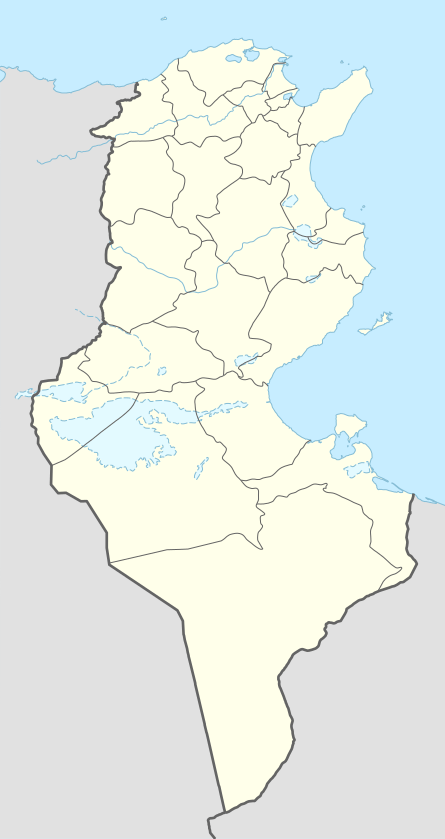Pupput
 Archaeological remains of Pupput | |
 Shown within Tunisia | |
| Location | Tunisia |
|---|---|
| Region | Nabeul Governorate |
| Coordinates | Coordinates: 36°23′34″N 10°33′45″E / 36.3929°N 10.5626°E |
Pupput (Tunisian Arabic: Souk el-Abiod) is an archaeological site near Hammamet, in northern Tunisia.
A settlement existed here since as early as the 1st century BC (perhaps of Berber-Punic origin), and was a simple village at the time of the rule of Roman emperor Antoninus Pius (2nd century AD), it became a colony under Commodus (185-192). According to an inscription in the Bardo National Museum, dedicated to emperor Licinius (4th century), the Roman name of the town was Colonia Aurelia Commode Pia Felix Augusta Pupput.
Historical sources mention the existence of a Capitol, a theatre and amphitheatre, of which no traces exist today. Remains include aqueducts parts, cisterns, some edifices with mosaics, and baths which gave the name to the nearby Hammamet (from Arabic hammam, meaning "bath"). At 300 meters is a large Roman necropolis, the largest in Africa.
The ancient town and bishopric of Puppi has been tentatively identified with this site at Souk el-Abiod.[1]
References
- ↑ Annuario Pontificio 2013 (Libreria Editrice Vaticana, 2013, ISBN 978-88-209-9070-1), p. 956
Sources
- Mongne, Pascal (2005). Archéologie: vingt ans de recherches françaises dans le monde. Paris: Maisonneuve et Larose/ADPF.ERC. pp. 260–262.
Coordinates: 36°23′34″N 10°33′45″E / 36.3929°N 10.5626°E
%2C_Algeria_04966r.jpg)